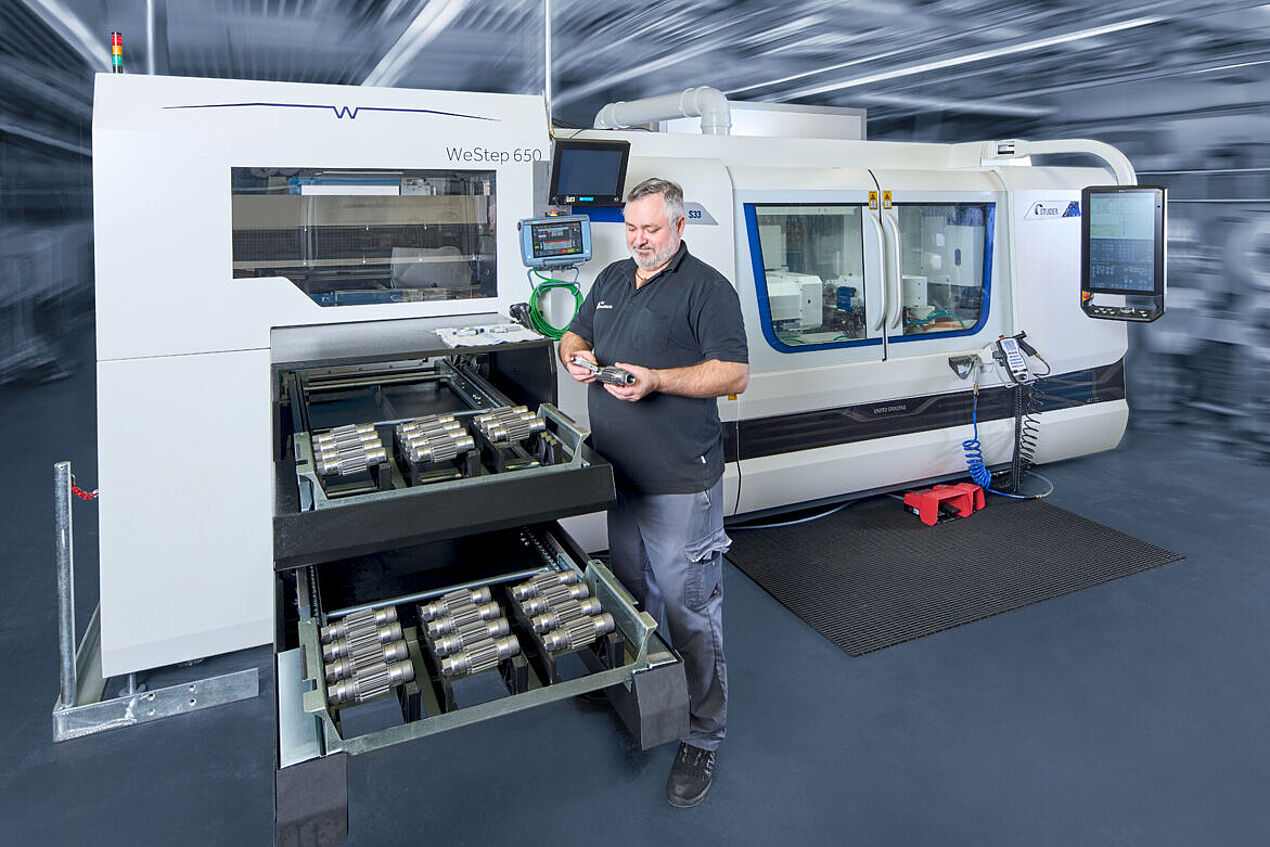External cylindrical grinding
Grinding is the term applied to various methods of abrasively finishing the surface of materials such as steel. One particular technique is known as external cylindrical grinding. This technique is the one used most often in industry when it comes to precision machining.
During the grinding process, rotosymmetrical workpieces are shaped and refined in CNC grinding machines.
Shapes are usually cylindrical, and the surfaces must be carefully ground to achieve very high levels of precision.
The required levels of precision range from fast cutting (coarse preliminary removal of surface material) to extremely fine grinding and polishing to create an extraordinarily smooth surface finish. Generally speaking, external cylindrical grinding is classified as a fine precision finishing process. Grinding wheels made of abrasive material and having varying degrees of coarseness (grit) are used in the grinding process. Corundum grinding wheels having a micro-crystalline structure are generally used. The grinding wheels are pressed against the workpieces so that the abrasives remove material from the surface of the workpieces during rotation. The degree of grinding precision is often as fine as 1000th of a millimeter.
This grinding process is typically used in the aviation and automotive industries which manufacture crankshafts and camshafts. Grinding is also essential in the production of hydraulic components to ensure that they are tight and leakproof. Grinding is used for components of all sizes – from extremely small to large. It is important to choose the right grinding machine for the particular job to ensure an efficient and economical grinding process.
High-precision grinding of the component surface is very important because the final surface finish has a major impact on how the component ultimately functions.
There are basically two modes of machine operation in the external cylindrical grinding process:
transverse (crosswise) and longitudinal (lengthwise), depending on how the workpiece is mounted on the machine. These modes are typically used when grinding metal surfaces. Longitudinal grinding is used in the production of components having cylindrical or conical (tapered) shapes. Transverse grinding is used exclusively for small surfaces. Transverse grinding also results in a torsion-free surface structure, which is important when producing impervious components for leakproof applications.
Another important grinding technique is centerless grinding, which is typically used in the mass production of jet needles, bolts and shafts. However, centerless grinding has one disadvantage – the size range of workpieces is limited. That is why centerless grinding is mostly used for small parts.
If you have any questions about external cylindrical grinding, please contact us and profit from our know-how and experience!



